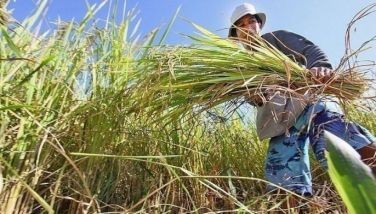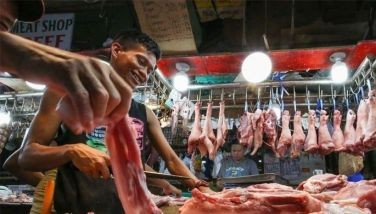Going bananas can make you rich
To strike it rich, scientists are recommending that people go bananas.
The Philippine Council for Agriculture, Forestry and Natural Resources Research and Development (PCARRD) has launched a primer to help ordinary folk make money from raising organic bongulan bananas — native Philippine Cavendish — that are exported to Japan.
The primer describes the farming practices of Victoria Motril, a farmer-scientist in Tupi,
See the potential
Bongulan is an indigenous banana that grows wild in the forests on the slope of
Motril makes her own compost by piling dried banana leaves, leaf sheaths, grasses and pseudo stems — what passes for a banana plant’s “trunk” — into a compost pit, as well as banana peelings and other waste materials. She drenches the pile with wastewater to hasten its decomposition.
“Motril saves a lot of money instead of buying inorganic fertilizers. Moreover, she produces chemical-free bananas (that) are good for human health,” PCARRD said.
According to a website of the One Town One Product (OTOP)
Through OTOP, local chief executives of each city and municipality take the lead in identifying, developing and promoting a specific product or service that has a competitive advantage.
The Tupi Bongulan Growers Association Inc. (Tubaga) acts as the consolidator of the bananas grown by its 125 members, composed of marginalized farmers from
Tubaga supplies 16,200 kilos to
The OTOP added that “in order to independently penetrate and obtain a bigger share in international markets, particularly in Japan, Europe and the United States at a much (more) satisfactory price,” the Tubaga has applied for certification with the Ecocert Group, one of the biggest organic food certification bodies in the world.
Bone up on bananas
According to the website www.philippineherbalmedicine.org, the banana plant is not a tree, but an herb. There are many varieties of bananas, but they are generally grouped into sweet bananas that turn yellow when ripe, and cooking bananas that remain green.
Most bananas traded worldwide belong to a subgroup of sweet bananas called Cavendish because of their long shelf life.
Bananas rank as the fourth most consumed food worldwide after rice, wheat and corn. The world production of bananas per year is estimated at $5 billion. The Philippines is one of the world’s largest exporters of bananas, producing about 3.5 metric tons — valued at about $700 million — and exports more than $200 million a year.
“This is made possible because of the favorable climate in the
There are many products that can be made from the banana plant.
From the fruit, one can make chips fried in sugar, flour that can be used to bake banana bread or cake, catsup, puree, juices and shakes.
Banana liquor — made from the fermented juice of ripe bananas — is popular in Eastern and
The fiber taken from the banana’s plant’s trunk can be dried, processed, dyed and made into clothing or home and fashion accessories.
Squeezing more out of bananas
Motril, who owns Vmotril’s Food Products, has figured out a way of using bongulan bananas that failed to pass Japanese standards. But first, she had to reduce the latex content of the bananas, which she said gives the resulting chips an “awful” taste, according to previous reports.
She discovered that crispy, great-tasting banana chips can be made by following several simple steps: leave the bananas — with their skins still on — under the sun, rinse them with salt water, peel and slice them thinly, soak the slices in cooking oil at room temperature, then fry them with muscovado sugar.
Her success at farming has earned her local and international awards. She placed second in the 2005 search for outstanding female farmers by the United Nations Food and Agriculture Organization, and was chosen as “outstanding high-value crops processor” in the central
She has ventured into supplying banana chips to
- Latest



























